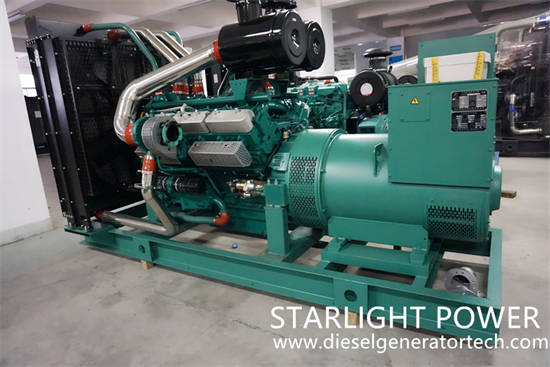Diesel is the fuel for diesel generator sets, without diesel, the set will be meaningless, but the shelf life of diesel is not as long as people think. Influenced by tighter regulations and environmental and economic concerns, modern refining processes make today's distillates more unstable and susceptible to contamination. Studies have shown that diesel fuel can only be stored for an average of 6 to 12 months. In general, diesel is susceptible to three factors: hydrolysis, microbial growth, and oxidation. The existence of these three factors will shorten the service life of diesel, why is this, and how to prevent it?
Threat of hydrolysis.
When diesel comes into contact with water, it causes a hydrolysis reaction, which means that diesel breaks down due to contact with water. As condensation builds up, water droplets can drip from the top of the tank onto the diesel. Contact with water creates a chemical reaction that, as mentioned earlier, breaks down diesel and makes it susceptible to the growth of microorganisms (bacteria and fungi).
Threats from microbial growth.
As previously mentioned, the growth of microorganisms is often a product of the conditions created by the contact of water with diesel fuel and requires water to grow. At a performance level, this is problematic because the acids produced by microorganisms can degrade diesel fuel. Fuel tank filters are clogged due to biomass formation, restricting fluid flow, corroding the fuel tank and damaging the engine.

Threat from oxidation.
Oxidation is a chemical reaction that occurs immediately after diesel fuel leaves the refinery when oxygen is introduced into diesel fuel. Oxidation reacts with compounds in diesel fuel, producing high acid numbers and producing unwanted gums, sludge and sediment. Higher acid numbers can corrode the tank, and the resulting gums and sediments can clog the filter.
Tips to prevent contamination.
Several steps should be taken to ensure that stored diesel fuel is clean and uncontaminated.
Short-term management specific to hydrolysis and microbial growth:
Use a fungicide. Biocides will help prevent the growth of bacteria and fungi that can thrive in the water and diesel interface. Once microorganisms are present, they multiply rapidly and are difficult to eliminate. Prevent or eliminate biofilms. Biofilm is a thick sludge-like substance that can grow at the diesel-water interface. Biofilms reduce the efficacy of biocides and encourage re-infection by microbial growth after fuel treatment. If biofilm is present prior to biocide treatment, mechanical cleaning of the tank may be required to completely successfully remove the biofilm and reap the full benefits of the biocide. Use fuel treatment with demulsification properties to separate water from fuel.
Short-term management of oxidation:
Keep the tank cool. The key to delayed oxidation is a cool tank, around -6°C is ideal, but should not go above 30°C. Cooler tanks can be achieved by investing in underground tanks or by providing a roof, or some type of enclosure to reduce exposure to sunlight (if field operations) as well as reduce exposure to water sources.
Treating fuel additives, such as antioxidants and fuel stabilization treatments, maintain diesel fuel quality by stabilizing diesel and preventing chemical breakdown. Treat fuel, but do it right. Do not use treatments or fuel additives that claim to be effective on both gasoline and diesel fuels. What you do with diesel should be for diesel, not for any given fuel source.
Long-term management to prevent contamination:
Empty and clean the water tank every ten years. A thorough cleaning every ten years will not only help maintain the life of the diesel fuel, but also the life of the fuel tank. Investing in an underground storage tank may cost more initially but lower long-term costs. It makes the fuel tank safer, cooler and the quality of the fuel will last longer.
Jiangsu Starlight Electricity Equipments Co.,Ltd. is one of the earliest manufacturers of generating sets in China. It has first-class testing equipment, advanced production technology, professional manufacturing technology, perfect quality management system, and strong R&D technical strength. It can provide 3KW-2500KW various specifications of universal, automatic, four protection, automatic switching, low noise and mobile, etc., high-quality, low-energy generating sets to meet all customers' power needs, and can also meet users' different voltages and different frequency requirements, as well as the parallel-connected power supply system of multiple units, use excellent talents to build excellent enterprises, create excellent products, create excellent services, and strive to build excellent domestic enterprises. For more product details, please contact us with sales@dieselgeneratortech.com.
Comments
Post a Comment